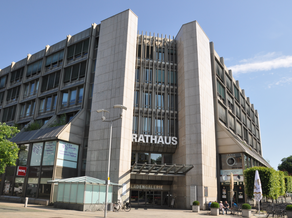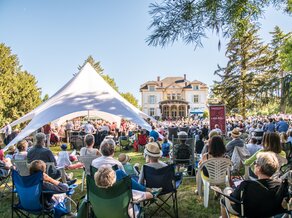Inventory analysis for the mobility concept
A comprehensive analysis of the current situation was carried out for the mobility and transportation concept. It incorporates numerous data bases that deal directly with transport issues or are related to these issues. These include, for example, the results of the household and commuter survey, the integrated urban development concept Bad Homburg 2030 (ISEK, 2017), the cycling concept (2018) and the integrated climate protection framework concept (2022). Supra-regional concepts were also taken into account, such as "FrankfurtRheinMain on the move - mobility strategy for the region" (Regionalverband FrankfurtRheinMain, 2020) and the Hesse Noise Action Plan (3rd round) - Darmstadt administrative district counties sub-plan.
As part of the Frankfurt/Rhine-Main metropolitan region, Bad Homburg is located in a densely populated area. With around 54,000 inhabitants (as at 31.12.2020), Bad Homburg falls into the medium-sized town category. At 45.3 years, the average age is slightly above the national average: population growth is based on a high rate of in-migration, which can compensate for demographic change. Forecasts assume that this trend will continue. The lack of sufficient living space is a limiting factor here.
Bad Homburg is considered an efficient and modern business location. In 2020, Bad Homburg had around 36,500 employees subject to social insurance contributions. The above-average proportion of highly qualified employees means that 40% of Bad Homburg households have a high income. In 2020, the city's purchasing power index was well above average at 156.4% of the national average. The location in the metropolitan region as well as the concentration of jobs - some of which are highly specialized - result in heavy commuter traffic. The commuter flows are divided into 28,600 inbound commuters and 12,800 outbound commuters. This is also due to the large difference between the large number of jobs on offer on the one hand and the lack of affordable housing on the other, causing a number of traffic problems in Bad Homburg.
Construction activities to expand the housing supply include the Hochtaunusklinik, Vickers-Areal, Am Hühnerstein (Ober-Erlenbach) and Südcampus (Ober-Eschbach) housing projects, which are either in the planning stage or already under construction.
Bad Homburg is well integrated into the various regional road networks: The highways BAB 5 and BAB 661 as well as the federal highway B456 are located in the Bad Homburg urban area or in the immediate vicinity. Bad Homburg also benefits from very good connections to Frankfurt Airport (approx. 20 km from the city center as the crow flies, 18 minutes by car). Bad Homburg can be reached by bus and train via the S-Bahn line S 5, the RB 15 (Taunusbahn), the U2 and several regional and express bus lines. Bad Homburg is primarily served by 24 municipal bus lines. There is no connection to the long-distance rail network.
Planned expansion projects include the extension of the BAB 5 and BAB 661 as well as the expansion of the Bad Homburg interchange. To improve rail connections, the extension of the U2 underground line, the electrification of the Taunusbahn and the construction of the regional bypass West are planned. In the area of local mobility, the measures from the cycling concept are being implemented and the planning of the Vordertaunus cycle highway is being driven forward.
In addition to surveys from various data sources, a household and commuter survey was conducted on mobility behavior in Bad Homburg v. d. Höhe. The results are available for download.
In the following, the information on Bad Homburg's transport system obtained in the analysis of the current situation is presented as positive (strengths, opportunities) and negative (weaknesses, challenges) points for each mode of transport.




